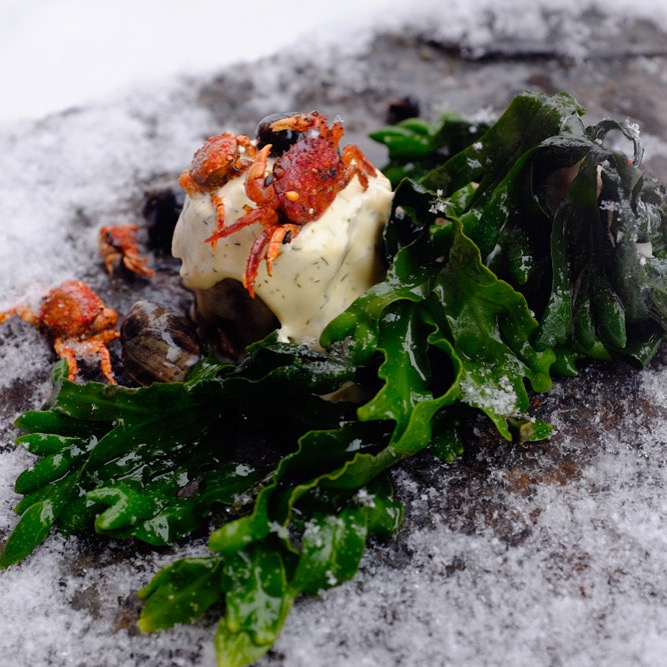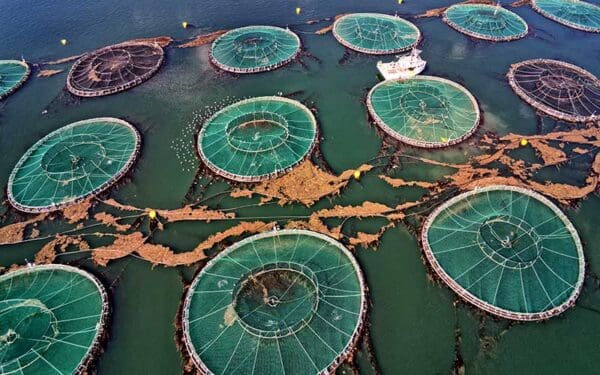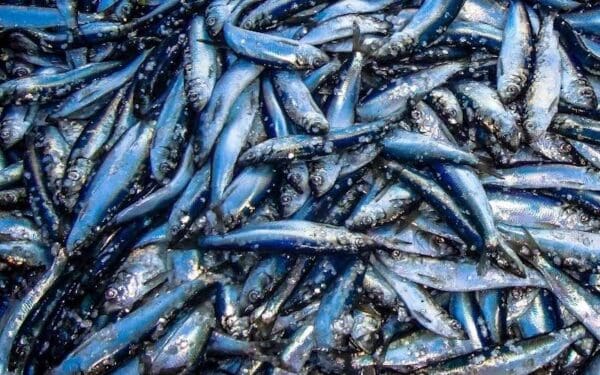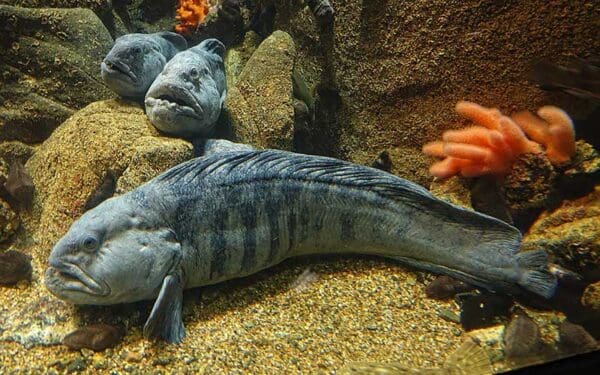
Invasive Asian shore crab species, Kanibaba, is an item you might find on the invasive species menu at Miya's Sushi in New Haven.
Bun Lai is the James Beard-nominated chef of Miya’s Sushi in New Haven, CT. Miya’s is known for being the first sustainable sushi restaurant in the world. To celebrate National Seafood Month, I spoke to Chef Bun Lai about forging a new path, and why it’s important to think of the environment when choosing seafood.
Q: What inspired you to get into the world of sustainable seafood?
A: I come from a people that lived by the sea, ate from the sea, and will be, one day, engulfed by the sea.
When I was a baby in Southern Japan, my mother would feed me one chopped oyster steamed in rice with peas, served with a single tiny dashi-simmered fish deftly stripped of its flesh with lacquer chopsticks. My mother grew up by the sea, digging for clams and collecting seaweed along the shores near her home. She loved helping her mother in the kitchen and, often, they cooked seafood together that the fishmonger would sell door-to-door out of a push cart full of ice and fish caught that morning.
I came to America when I was barely three years old. My siblings and I grew up in New Haven, Connecticut. My parents would take us fishing, clamming, and foraging for seaweed along the Long Island Sound. In those days, my dad did medical research at Yale and we lived in university apartments, only blocks from the Mill River that spilled into the Sound. When I was seven, I’d have a recurring dream. In the dream, my brother Ted and I would sneak down to the basement of our apartment in the middle of the night and discover the basement flooded and full of fish. We would sit on the basement steps and cast – but I don’t recall ever catching anything.
Another time, when I was little, the rubber ball that I was kicking ended up in the pond at my grandparent’s house. I imagined that the ball was the world floating in the pond and as time passed, it became populated by people and other living things like me. These experiences gave me a sense that I was a microcosm of something greater than myself.
Q: This connection led you to sustainable sushi?
A: Today, many people are disconnected from the ocean from which we came. When our seafood comes processed and packaged, one does not know from experience that our food was once a living thing, with a life and a world of its own. I think about how the blood in our veins is similar in salinity to the ocean. I think about how we are connected to nature in ways we will never understand. I think about how the ecosystem of our bodies are directly connected to the ecosystem of the planet. And when we hurt the planet, we hurt ourselves. To that end, my journey to sustainable sushi wasn’t something I thought about. It just happened. It is instinctual, the way birds migrate. The birds can’t articulate why – but it’s fundamental to who they are.
Q: I heard that you invented the sweet potato roll – the “California Roll” of plant-based sushi. Did you know it was going to become such a fan favorite?
A: Traditionally, the Japanese did not eat much meat. Japanese cuisine was mostly plant-based. The longest-living people in the world are from Okinawa, Japan, and the bulk of their diet consists of plants. Beyond being nutritious, plant-based sushi has the potential to take some pressure off of the oceans. I had no idea that the sweet potato roll would become popular. It’s so cool to see super creative chefs the world over inventing vegetarian sushi recipes that are starting to share the stage with seafood.
Q: In New England, we love our iconic staples, like cod and lobster. But sometimes – as is the case with cod – the numbers drop too low, and to let the species recover, we have to stop catching and consuming it. Luckily, there are lots of other great types of seafood out there. What are your thoughts on this, and what are some of your favorites?
A: Recently, there have been congressional hearings for proposals that have the potential to undermine the progress made in American fisheries. (You can follow along with the Oct. 24 Senate hearing here.)
With the recent dismantling of the EPA, for example, the fear is that our domestic fisheries will be deregulated, too, making our seas like the Wild West. Most of the world’s oceans (including America’s before the Magnuson-Stevens Fisheries Management Act) are endangered by illegal fishing operations that decimate habitats, fish populations, and the communities of people who depend on them.
Here at home, despite all the problems that still exist – for which Atlantic cod is a poster child – American fisheries are among the best-managed fisheries in the world. This could change if the Magnuson-Stevens Act is weakened. You can help by calling your representatives in Washington and asking them not to allow any revisions to the act that has been fabulously successful in rebuilding and protecting fish populations and the livelihood of people in the American seafood industry.
Q: What sparked the creation of your innovative invasive species menu?
A: In 2001, Yancey Orr, then an undergraduate at Yale University and a server at Miya’s (and today a Professor of Environmental Anthropology) and I were flipping rocks along the craggy shores near New Haven. Yancey and I both spent childhood summers along the Connecticut shoreline, so when we discovered crabs we hadn’t seen before, we caught them and looked them up. They were an invasive species. Before that, I didn’t even know what an invasive species was. We had just started working on slowly incorporating sustainable seafood into the menu at Miya’s and using invasive species – as an abundant but underutilized food source that needed to be removed from the environment – made perfect sense.
Q: You won a “White House Champion of Change for Sustainable Seafood” award last year – congratulations! What was it like to know people were paying attention to what you were doing?
A: The award wasn’t about my work; it was about illuminating the work of countless people who tirelessly innovate to help make the seafood industry a sustainable one.
Q: Aside from eating at your restaurant, what is your advice to New Englanders who want to consider the environment when making food choices?
A: Change happens little by little. And it’s a struggle. But, it’s the effort that matters – not perfection. If you are a chef or a restaurateur, you don’t have to go sustainable across the board and in one fell swoop. It’s about making choices that have the most impact, while making it work as a business, too. If you remove red-listed types of seafood and replace them with yellow ones, little by little that will do a world of good. Studies of the fair-trade movement in coffee revealed that it was cafe owners who cared about doing it the right way before the consumers were asking for it. Business owners have the power to shape culture.
And consumers have the ultimate power to make a difference by not choosing to purchase goods that have an adverse impact on the planet. Your hard-earned dollar shapes the world by how you spend it. There are so many free online tools today to help consumers make good choices about which seafood to purchase. You can use Monterey Bay Aquarium’s Seafood Watch guide or Environmental Defense Fund’s EDF’s Seafood Selector guide, which are among many that exist, to help you make the best choice. If you are a chef or a restaurateur, you can use fishchoice.com to source sustainable seafood.
It is not alarmist to say that the oceans are being decimated. How you choose to eat will make all the difference. The tools to make the right choices are abundant and available.
Learn more about Miya’s Sushi and Chef Bun Lai here. Visit clf.org/MSA to learn how you can take action to encourage Congress to pass a strengthened Magnuson-Stevens Act.




